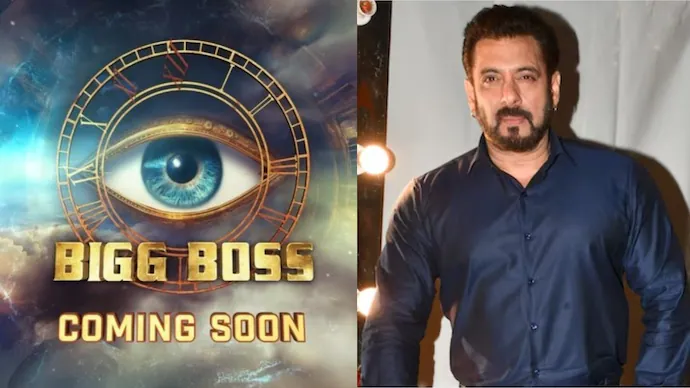Explore the true inspiration behind Lakshya (2004), a Kargil War-based film showing the transformation of a confused youth into a brave Indian Army officer.
Lakshya (2004) – From Directionless Youth to Kargil War Hero
Finding Purpose on the Battlefield
“Lakshya,” directed by Farhan Akhtar, is a unique entry in Indian war cinema. Released in 2004, just five years after the Kargil War, it doesn’t merely depict a battle — it shows the internal war of a young man trying to find meaning in life.
Portrayed powerfully by Hrithik Roshan, Karan Shergill‘s fictional journey is inspired by many real-life officers who found their true calling in the military during the 1999 Kargil War.
While Lakshya is not a direct biopic like Shershaah or Major, it is deeply rooted in reality, especially in its depiction of the Indian Army’s ethos, the Kargil terrain, and the psychological transformation of young officers under fire.
Kargil War and the Gorkha Rifles
Lakshya takes place during the Kargil War, especially focusing on the capture of a fictional peak inspired by real ones like Tiger Hill and Point 4875.
The battalion in the movie — the 3rd Battalion of the 3rd Gorkha Rifles (3/3 GR) — is a nod to one of India’s most respected regiments that actively participated in the 1999 conflict.
The Protagonist: Karan Shergill – A Symbol, Not a Soldier
Karan Shergill, the protagonist of Lakshya, represents thousands of urban Indian youths in the 90s — aimless, privileged, drifting.
After dropping out of college and facing rejection from his girlfriend Romila (Preity Zinta), Karan enlists in the Indian Military Academy. From a rebellious cadet to a commissioned officer, and finally, the hero of a mission in Kargil, his journey is deeply emotional and symbolic.
Realistic Kargil Terrain Depiction
Filming locations:
- Ladakh, including Dras, Kargil, and Pangong Tso
- Some scenes were shot near actual warzones, adding authenticity
- The cliff-scaling sequence is based on real tactics used during the Tiger Hill assault by 18 Grenadiers and 2 Naga Regiment.
Real Incidents Behind Lakshya
The Cliff Climb Mission – Inspired by Tiger Hill Assault
The film’s climax, where Karan Shergill leads his Gorkha platoon to scale a vertical cliff under the cover of night, is directly inspired by:
- Tiger Hill Assault, led by Grenadier Yogendra Singh Yadav, Subedar Sanjay Kumar, and Captain Vikram Batra.
- They used mountaineering equipment to climb steep ice cliffs and surprise Pakistani positions.
The Youth-Warrior Transformation
Karan’s transition from aimlessness to determination reflects the stories of several real-life heroes:
- Captain Vikram Batra, who changed his path after joining the Indian Military Academy.
- Lt. Vijayant Thapar, who matured into a leader after initially struggling at IMA.
- The Indian Army saw many young men find their lakshya (goal) during Kargil.
Indian Military Academy (IMA) – True Training Shown
The IMA training montage in Lakshya is considered one of the most accurate in Indian cinema:
| Training Aspects | Realistic Portrayal? |
|---|---|
| Obstacle course, rope climbing | ✅ Yes |
| Weapon handling, drills | ✅ Accurate |
| Discipline & punishment culture | ✅ Realistic |
| Emphasis on self-discipline | ✅ Highlighted well |
The ‘fall and rise’ scenes mirror the intense physical and mental preparation of officers during the 49-week training.
Emotional Realism: Loss, Doubt, and Courage
Lakshya focuses on mental struggles more than external enemies.
- Karan’s breakdown in the tent shows the reality of soldiers doubting themselves.
- The bond between troops, especially the Gorkha jawans, showcases deep respect.
- Final radio call after mission success, “Mission Accomplished, Sir,” evokes the stoicism and pride of Indian Army officers.
Karan Shergill – Fictional, Yet Real
| Aspect | Karan Shergill | Real Inspirations |
|---|---|---|
| Urban youth, privileged | ✅ | Thousands of NDA/IMA recruits |
| Directionless early life | ✅ | Common among many officers |
| Passion found in Army | ✅ | Like Batra, Nayyar, Thapar |
| Heroism in war | ✅ | Reflects courage of Indian Army |
Cinematic Merits and Realism
| Element | Realism Rating | Notes |
|---|---|---|
| Army lifestyle | ★★★★★ | Based on ex-Army advisors |
| Terrain visuals | ★★★★★ | Shot in real Kargil areas |
| Emotional arc | ★★★★☆ | Fictionalized but believable |
| Enemy depiction | ★★★★☆ | More symbolic, not detailed |
Cast and Performances
- Hrithik Roshan: Showcased an incredible range — from immature to inspiring
- Amitabh Bachchan: As commanding officer, offered gravitas and realism
- Preity Zinta: As Romila, represented the civilian lens on patriotism and love
Awards and Recognition
- Filmfare Awards: Best Cinematography (Christopher Popp)
- Critical Acclaim: Rated as one of the best war dramas for its nuanced approach
- Used as a motivational film in military academies and schools
Psychological Themes
- Identity crisis: Karan represents the post-liberalization Indian youth searching for meaning
- Discipline vs. freedom: IMA becomes the crucible for transformation
- Fear vs. courage: Battle scenes show fear is not absence of bravery, but its companion
Sources and Research
- Interviews with Farhan Akhtar, who visited IMA and army camps for authenticity
- Indian Army Kargil War Reports
- Accounts of Tiger Hill and Point 4875 assaults
- Psychological studies on youth in the armed forces
Behind-the-Scenes Realism
- Hrithik trained with ex-army personnel
- Climbing scenes required actors to undergo actual altitude training
- Gorkha troops shown speaking in Nepali-accented Hindi, as in real life
- The film had an Army consultant panel, including retired officers
Lakshya vs. Other Kargil Films
| Film | Focus | Unique Element |
|---|---|---|
| LOC: Kargil | Multi-narrative | Actual names, events |
| Shershaah | Biopic | Based on Capt. Batra |
| Lakshya | Fictionalized arc | Psychological transformation |

Lessons from Lakshya
- Purpose is forged in adversity
- The Army doesn’t just fight wars — it builds men
- Even the most ordinary people can perform extraordinary acts
Iconic Dialogues
“Main aaj bhi wahi kaam kar raha hoon jiske liye mujhe bheja gaya tha.”
(I’m still doing the job I was sent here to do.)
“Mujhe wohi banna hai jo main banna chahta hoon.”
(I want to become what I truly want to be.)
Lakshya is not just about war — it’s about finding oneself through service to the nation.
Karan Shergill’s climb up the cliff was more than a physical feat — it was the symbolic journey of every Indian who has ever asked themselves, “Who am I?”
And when you serve a cause larger than yourself, the answer becomes clear:
“You are a soldier. You are the Lakshya.”
Also read: LOC: Kargil (2003) – The Most Expansive Retelling of India’s Bloodiest Modern War
Last Updated on Wednesday, May 14, 2025 4:10 pm by Admin









